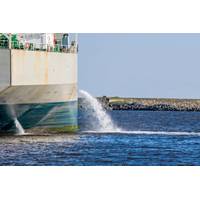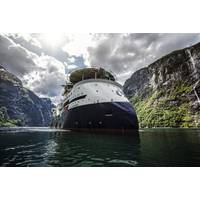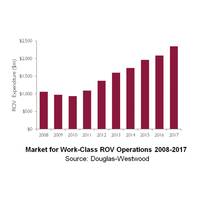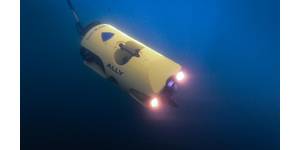
Ballast Water Management is Reducing the Flow of Invasive Species into the Great Lakes
discharge of ballast water is responsible for thousands of coastal invasions worldwide. It has been the most important cause of invasion in the Great Lakes since 1959, when the modern St. Lawrence Seaway was opened to accommodate larger ocean vessels carrying cargo.In the mid-1980s a cargo ship from eastern Europe began an overseas voyage to the Great Lakes. Before the ship left its home port, water was pumped into its ballast tanks to add weight and stability to safely cross the Atlantic Ocean. The water contained larvae of an invasive freshwater mussel. After the ship passed through the St Lawrence Seaway
Drones Will Take Off for Shipping, Says Allianz
drones are being used to undertake survey work and environmental monitoring.Drones are likely to find many more uses in the maritime sector in the years to come, some of which could help prevent or mitigate losses, according to Volker Dierks, Head of Marine Hull Underwriting, AGCS Central & Eastern Europe.“Drones make it simpler and quicker to examine a ship and its cargo, but it is easy to see how the technology could be used to assess environmental pollution damage or observe shipping traffic in congested transit routes,” says Dierks.For example, drones can be used to carry out inspection
GE Interested in German Offshore Wind, Eastern Europe
General Electric, fresh from taking on the offshore wind business of rival Alstom, is positioning itself in Germany's expanding offshore wind sector and looking at eastern Europe. "German offshore wind has become very important for us," Carlos Haertel, chief executive for GE Germany & Austria, told Reuters in an interview. "Onshore wind in eastern Europe and the Balkan countries is currently interesting, especially in Poland and Romania," he said. GE, the world's third-biggest wind turbine manufacturer by market share after Denmark's Vestas and

Subsea Vessel Ops Predicted to Grow Over Coming Years
to increase by 54% as compared to the 2010-2014 period. Field development will account for the largest requirement in the region follow by IRM. Subsea trees in deeper waters are expected to be installed towards the end of the forecast period on the Great Gorgon and Scarborough projects. Eastern Europe & FSU The majority of EE&FSU regional developments are shallow water-focused with increasing deepwater projects coming online through the forecast period in the Caspian Sea. The majority of regional expenditure is associated with pipe laying and pipeline support vessel activities due

Extraction Spending to Increase in Sub-Saharan Africa
economic output. It covers five industry sectors - extraction, utilities, manufacturing, transport and social – and forecasts their impact on seven major world economic regions ((Western Europe, Latin America, Asia-Pacific, Middle East, sub-Saharan Africa, Former Soviet Union and Central and Eastern Europe). It estimates the scale of current infrastructure investment and assesses the prospects for future investment from now to 2025. Overall, close to $78 trillion is expected to be spent globally between now and 2025 on capital projects and infrastructure. The report finds that during

A Pivotal Year for AUVs in the Oil & Gas Sector
applications are also strong, while Gulf of Mexico oil & gas will increase demand for inspections and civil hydrography. • Middle East - More applicable for low-logistics activities and potentially rig moves, pipeline surveys and inspections. • Eastern Europe - Healthy demand in activities such as environmental sensing and hydrography. • Western Europe - Large military sector, but proportionally larger for research activities. North America will overall remain the leading region in the next five years, demanding most AUV

The Rise of the Work-class ROV Market
very steady, but a sharp increase in demand in 2013 meant ROV days almost doubled from their 2012 levels. Large shallow-water gas developments now dominate subsea activity here, so Australasia’s demand is set to decline substantially over the forecast period. • Eastern Europe & FSU Eastern Europe & FSU is forecast to be one of the smallest regions in terms of ROV activity. However, it will experience some growth in demand between 2013 and 2017 as required ROV support days grow at a low CAGR of 6%. Demand within the Eastern Europe & FSU region will be

Increase in Demand for the Hot Subsea Vessel Market
developments will continue to dominate subsea activities off the west coast of Australia until 2016. There are no visible projects in 2017, but major projects are due to come onstream beyond the forecast period. Field development will account for the largest demand in the region followed by IRM. Eastern Europe & FSU Vessel demand is expected to be driven by ongoing pipeline projects in the region, while field development activity is expected to remain sporadic over the next five years. The subsea sector is relatively small in the EE & FSU region with lower demand for vessels that carry out

 February 2025
February 2025




